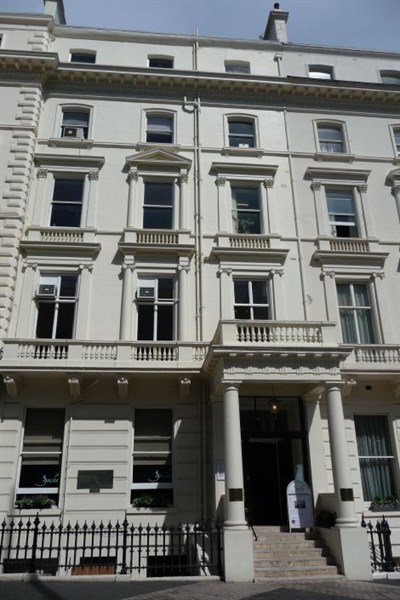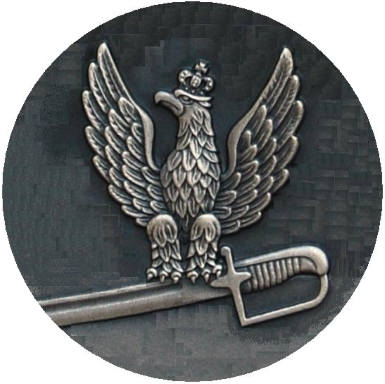Still keeping the home fire burning after 75 years. Polish Hearth: 1939 - 2014
Ognisko Polskie, Polish Hearth Club, is a Members’ Club and an important part of Polish Social and Cultural life in London. Polish traditions remain at the heart of the Club, as they have been since it was opened in 1939, at the start of World War 2. Founded with the combined initiative of the British and Polish Governments, it was inaugurated by HRH The Duke of Kent in 1940 and to this day his family continue to support the Club. It became the hub of Polish social and cultural life, with a good restaurant, meeting rooms, a theatre and a ballroom. It was supported by Officers, along with their families and friends together with a prospering theatrical and literary community. Leading figures in Polish cultural society, along with senior Military figures were frequently to be seen in the Club. After the War it continued to meet the needs of the Polish community, their friends and supporters, as it still does today. The house itself was completed around 1870, a private home to a Victorian family and is now a Grade Two listed building. After extensive refurbishment this year, the delightful architectural features of the interior are now clearly displayed and restored to their former grandeur. Historic portraits of prominent Polish figures continue to have pride of place in the Club and the Restaurant provides a varied bill of fare, with Polish cuisine forming the basis of the menu.
The idea of setting up a Polish centre in London was first discussed at the Polish Embassy, following the Nazi and Soviet invasion of Poland in September 1939. The British Government and the British Committee for Relations with Other Countries (later renamed the British Council) lent their full support to the idea. The British government was quite aware of the perceived lack of knowledge of the countries of Central and Eastern Europe. Lord Lloyd, the Colonial Secretary, who was also Chairman of the fledgling British Council, was most enthusiastic and helpful. It was at a meeting held between him and Count Edward Raczyński, the Polish Ambassador, that the decision to implement the idea was taken in November 1939, pro memoria, after which Polish and British Government representatives were tasked to implement the initiative.

The Grade II listed building built in 1870.
In order to have a centre where the Free Poles would feel at home a house was rented for £300 p.a. in December 1939 from Sir Frank Newnes who held the leasehold on 55 Prince’s Gate. The Polish House was in effect the intellectual hub for Poles arriving in London whether as civilians, enlisted, diplomats or politicians. The initial flight from the terror of Nazi, and then two weeks later from Soviet aggression, was initially by men of letters, writers, poets and artists. The Foreign Office of both Great Britain and Poland was involved in the behind the scenes operation of the Polish House.
Frank Savery CBE who had been the Consul General at the British Embassy in Warsaw since July 1919 until September 1939 became the First Chairman of the Polish Hearth and served until 1949. He had been a “Warsaw Fixture” for the entire interwar period and is fondly remembered for his rendition of “It’s a long way to Tipperary” whilst waving a Union Jack and conducting the old pump organ that was pulled out on to the steps of the British Embassy in Warsaw when crowds gathered there after the Nazi invasion. Shortly afterwards the Embassy was evacuated to London along with the recently opened Warsaw Bureau of the British Committee for Relations with Other Countries (British Council from 1940).
From the Polish Foreign Office (MSZ) it was Count Jan Baliński Jundziłł who became Vice Chairman from 1940 to 1949 and then Chairman from 1949 to 1973. Count Jan Baliński Jundziłł was the Liaison Officer for the Polish Government and its representative at the Political Warfare Executive. It was quite a partnership of British and Polish diplomats where all members and guests had to leave their hats, and side arms, in the Ognisko Foyer along with the fraught politics that seemed to be prevalent. One of the most important and often overlooked raison d’être behind the Polish Hearth and still enshrined in the aims and rules is the apolitical nature of the Society reflecting its Civil Service roots. Members of Allied armed forces or any other bona fide Polish organisations have always been made welcome – and that is the case to this very day as all members of other bona fide Polish organisations and clubs in the UK are still treated as honorary members whilst on the premises. However, in wartime London everyone had to carry an ID card ……now it is just an up-to-date membership card.
HRH the Duke of Kent, through his involvement with the Anglo Polish Society from before the outbreak of war and now the Welfare Section of the RAF, where he knew first hand the plight of his fellow Polish Pilots, became very involved in the new initiative as Patron of the Polish Hearth. It was certainly by chance that the timing for the Inauguration of The Polish Hearth by HRH the Duke of Kent on the 16th July 1940 coincided with the retreat from France and the arrival of the Polish Government and the Free Polish Armed Forces in London.
The Polish Hearth henceforth took on the character of a Polish Officers Mess which has remained with it to this very day: Still keeping the home fire burning after 75 years.
1940 was also the start of a natural surge in the popularity of social activities as well as the expansion of other activities at the Polish Hearth, such as the foundation of the Association of Polish Technicians (1940) or the Polish University College (the “Politechnika”). The actual size of the Polish Government, its ancillaries and Armed Forces arriving in London created a demand for space, and with the ever increasing war effort, the social activities of the Polish Hearth together with the Polish Red Cross, under the leadership of Mr Alfons Poklewski Koziell who was its President, were moved to 45 Belgrave Square until the end of the war in 1945.
The first Director from December 1939 of the Polish House was Professor Bernard Wilfrid Arbuthnot Massey who wrote many books about Poland as well as translating Polish literature into English. He also had a keen interest in fishing especially English fresh water fish. He was active in the Polish Research Centre at Ognisko and later became British Vice-Consul at Poznan in 1950.
Mr Ronald Braden became Director of the Polish Hearth in 1940 for two years and oversaw the inauguration and expansion to 45 Belgrave Square. Dame Nancy Parkinson as Director of the British Council was always very supportive of the Polish Hearth. It was incidentally during the early 1930’s that interest in Central and Eastern Europe was gaining favour within the pillars of British society and governing bodies and thus an old 19th Century British organization of solidarity with Poles, the Literary Association of the Friends of Poland, founded in February 25, 1832 in London by Prince Adam Jerzy Czartoryski and the Scottish poet Thomas Campbell, was “resurrected” as the Anglo Polish Society. It is of note that some of the first Guests at Ognisko were refugee Polish poets, artists and writers and they were met by the Anglo Polish Society whose Patron was HRH the Duke of Kent.
Min. Stanisław Stroński, Polish Minister of Information, and close associate of the B.B.C. Polish News Service, is recorded as having suggested the name “Polish Hearth - Ognisko Polskie”. In fact it was even printed as such in the Times on the 15th July 1940: The Polish Hearth. It was of course very important to “Keep the Home Fires Burning” once again as Europe plunged into a new conflagration and Ivor Novello’s Great War song surged once more in popularity.

The logo of Ognisko Polskie. Polish Military style Eagle sitting above a Karabela.
For the duration of the Second World War, Ognisko Polskie became a legendary and very popular Wartime London Club not only “keeping the home fires burning” but quite a “hotspot” with a renowned Polish military zest combined with traditional Polish hospitality that was the precursor to the GI fever that swept in at a later date.
However, on the 5th July 1945 the British Council withdrew their financial support at 45 Belgrave Square and the Polish Club returned to its original building at 55 Princes Gate, where British Council financial support also expired in 1946 and Sir Frank Newnes who still had a 30 year lease of the building agreed to Ognisko Polskie staying on as a tenant along with the Polish Red Cross, the Anglo Polish Society and ZASP (Związek Artystów Scen Polskich) as well as the Polish Research Centre in one room and the Polish University College using the spacious rooms for various lectures and meetings.
After long negotiations, the Polish Government in Exile and Polish Red Cross, having established a British Legal Entity shortly after the “Free Elections” in Soviet Occupied Poland, which was named the Relief Society for Poles, took on the remainder of the leasehold from Sir Frank Newnes in 1951. This expired in 1976 and the RSP/TPP did not wish to neither renew the leasehold nor buy the building. It was Ognisko Polskie Ltd (Incorporated in 1952) that took it all on, finally buying the freehold in 1978 from the University of London.